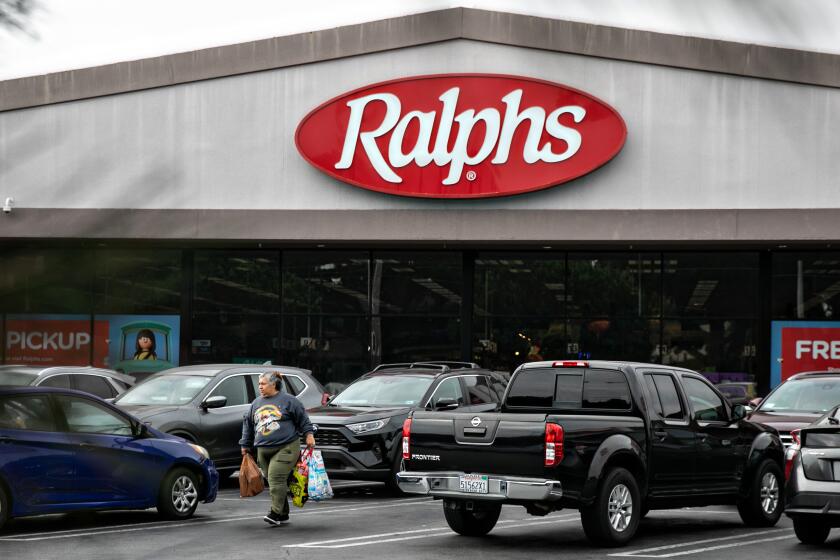This 105-year-old restaurant is a secret, tiled masterpiece. And it’s up for sale
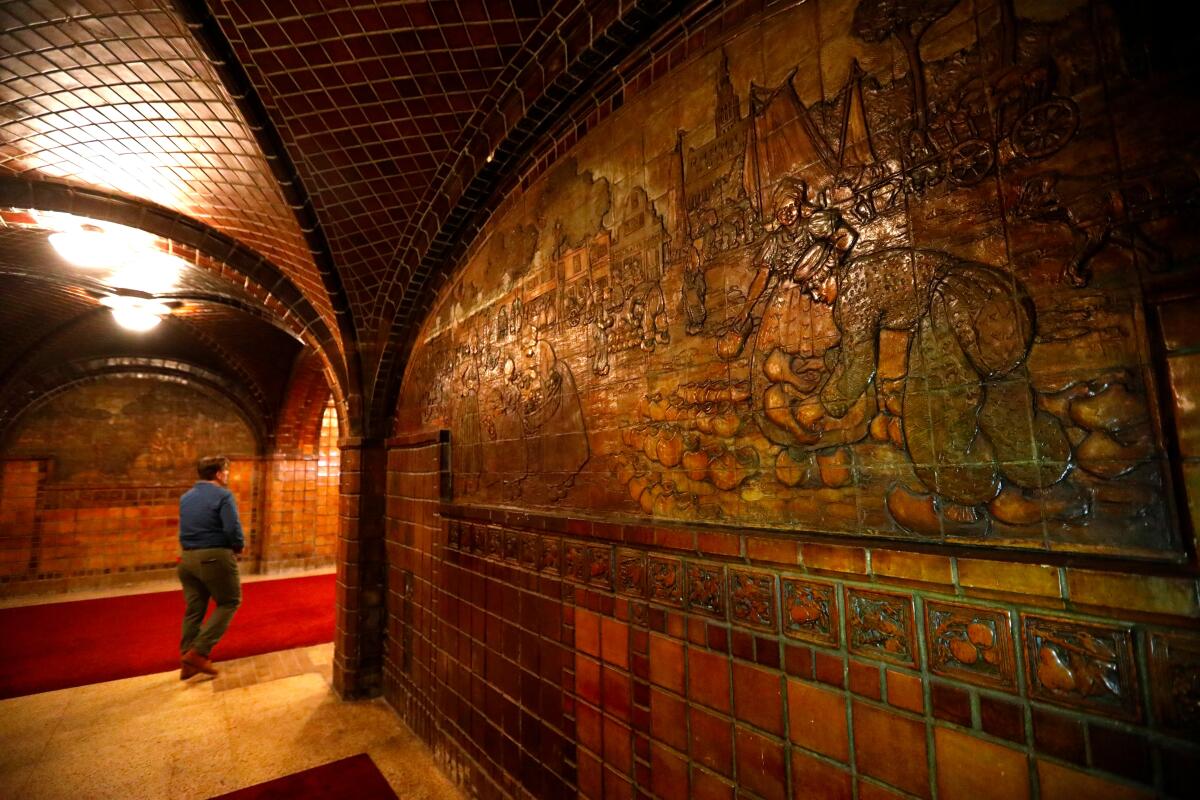
- Share via
The historic Dutch Chocolate Shop, a quirky Los Angeles art treasure long obscured from public view, may soon be seen again.
The building that houses the long-shuttered restaurant is for sale, which could set the table for a revival by a new owner.
Created in 1914 by one of California’s most famous tile craftsmen, the shop that once specialized in hot chocolate is a city historic-cultural monument. The ground-floor space has survived more than a century of changing uses and the decline and rebirth of its downtown neighborhood.
In a recent incarnation on a dingy block of 6th Street near Broadway, the chocolate-colored tile murals depicting idealized scenes of life in Holland were obscured by the plywood stalls of an arcade where shopkeepers sold socks, VHS tapes and other low-cost wares. The last occupant sold prepaid mobile phones.
Hidden from visitors was one of Pasadena artist Ernest Batchelder’s earliest commissions and one of the largest existing collections of his work. He created handmade tile murals of sailing ships, windmills and canals, of Dutch women in bonnets, knitting and carrying jugs; of Dutch men in ballooning trousers out with their oxen.
Batchelder decorated tiled pillars and groined arches in hues of rich caramel, butterscotch and chocolate brown that can appear medieval, and the room was recently used for a commercial for the computer game “World of Warcraft” intended to look like a feast in the Middle Ages.
“Everywhere you look, you just get lost in it,” Los Angeles historian and tour guide Kim Cooper said. “You learn more every time you see it.”
The chocolate shop was an early commission for Batchelder, who became widely known as a creator of artistic tiles that were affordable to people of modest means. According to architectural historian Robert Winter, hundreds of homes in Southern California and other parts of the country were endowed with Batchelder fireplaces and fountains.
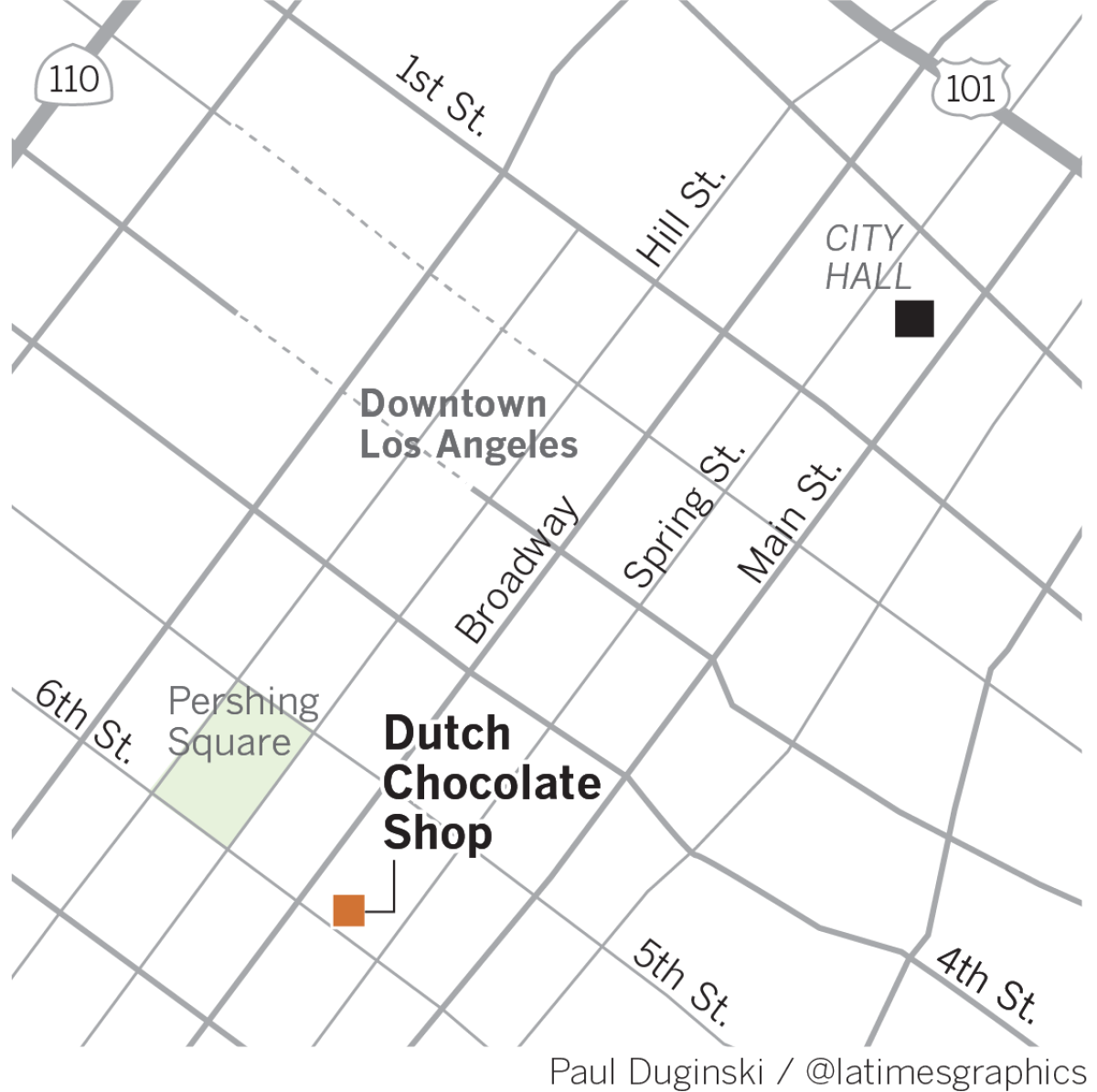
The chocolate shop has long been a pilgrimage stop for Batchelder fans, but turning it back into a restaurant or other commercial enterprise would be a daunting — and expensive — challenge. The seller is seeking $12 million for the building at 217 W. 6th St. that houses the famous former shop, and the new owner would have to spend perhaps an additional $6 million to get it ready for occupancy, an architect familiar with the property said.
When the four-story building was erected by builder Gerhard Eshman around the turn of the last century, it had a back exit to the street, architect Morgan Sykes Jaybush said. The Broadway-Spring Arcade Building was erected directly behind it in the 1920s and an exit to the Eshman building was included in the arcade that served until bad blood erupted in the 1980s.
“Over time, the two owners had a disagreement and closed the opening, which made no second exit,” Jaybush said. “That makes it not a safe building.”
The best fix would be to create a new staircase in the back of the building leading to a fire-resistant passage in the basement that would exit to the street, the architect said. Other needed improvements include a new elevator and seismic upgrades that would permit bricked-in windows to be reopened.
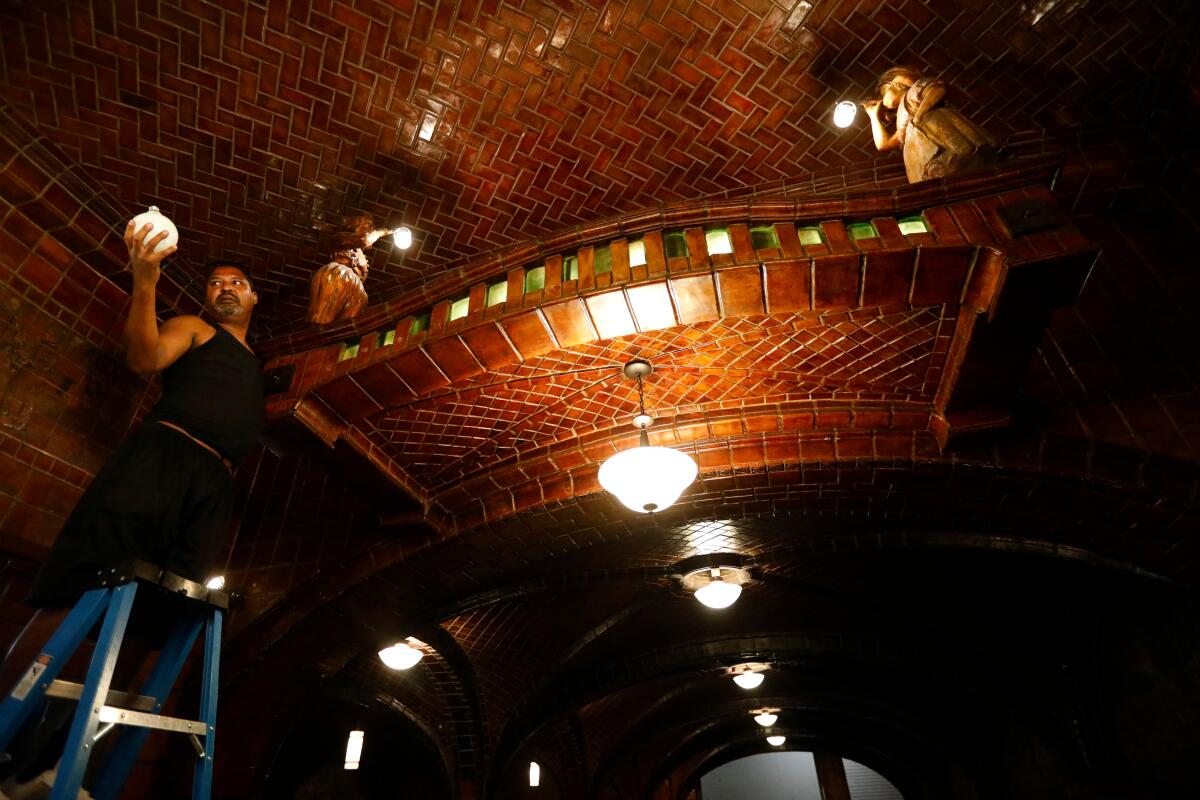
“The chocolate shop room is an amazing space and definitely a treasure,” said Jaybush of Omgivning, an architecture firm that specializes in historic structures. “The rest of the building is more of a challenge.”
That expensive challenge is too much to bear, said the owner, who inherited the property three years ago and asked not to be publicly identified.
“It is with great reluctance that I have to let go of the building,” the owner said.
With the ongoing revival of blocks around the historic Broadway theater district, “the building could be used for a variety of functions including retail, hospitality, office and even residential,” said real estate broker J. Austin Russell, who represents the seller.
The building is mostly used now for film shoots, Russell said, a practice that dates to 1918 when screen star Dorothy Gish donned a replica of the chocolate shop’s waitress uniforms to film scenes there for “The Hope Chest,” a silent comedic drama.
Other noteworthy shoots there included the 1980 Steve McQueen action flick “The Hunter” and more recently television shows “Castle” and “The Good Place.” Taylor Swift used it in her 2015 music video “Bad Blood.”
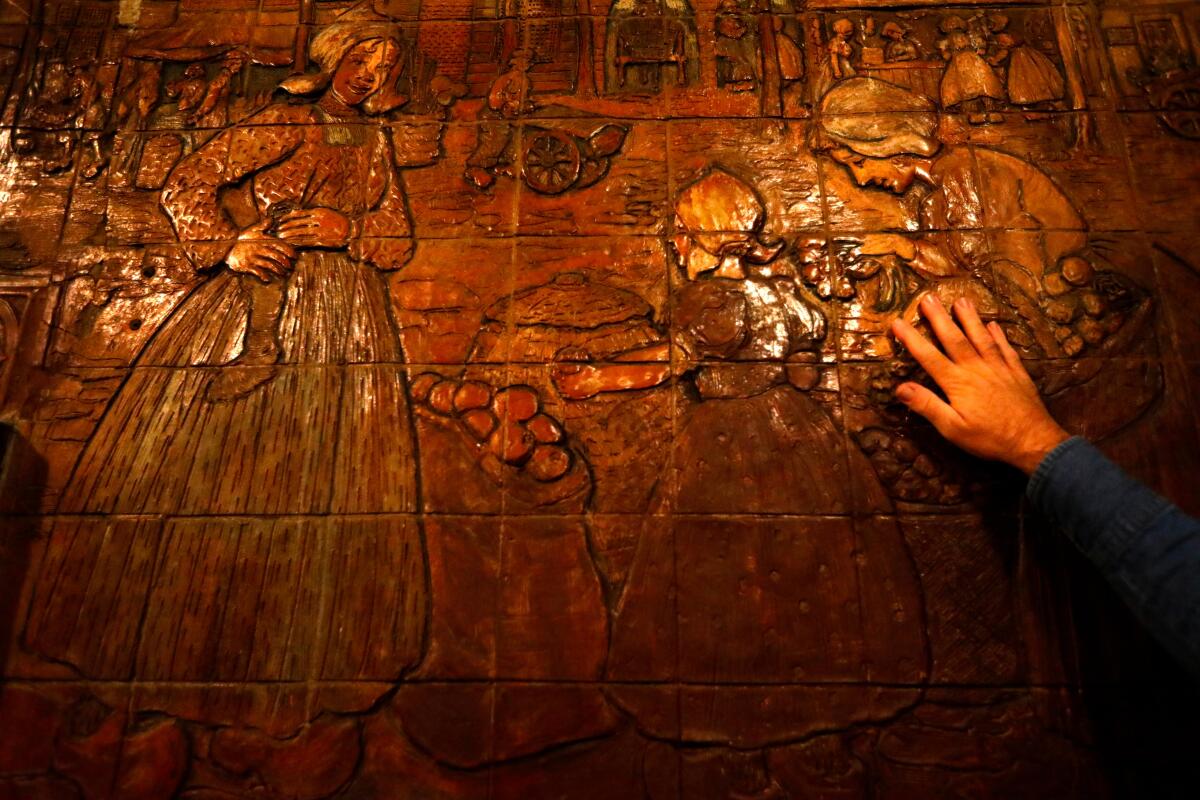
An account in a 1924 issue of Western Architect reveals that the shop was a remodel of the first floor of an existing building. The architect, Plummer & Feil of Los Angeles, designed the whole interior as if it were an independent structure, leaving only the main supports for the upper floors.
Hot chocolate was a fad in the years around World War I. After it faded, new enterprises filled the space.
From the 1920s to the 1940s, the Health Cafeteria offered “the supreme flavor of wholesome natural foods, particularly vegetables and fruits,” according to a 1927 ad. Later, it became Finney’s Cafeteria and in 1975 was declared a historic-cultural monument by the city of Los Angeles.
Unoccupied upstairs for decades, the floors above the chocolate shop were a time capsule, Cooper said.
There were original wooden doors with transoms above for ventilation as well as the remains of an alternative medical clinic that operated for about two decades starting in 1939. The Dr. A. W. von Lange Health Institute offered colonics, “heat packs” and other treatments.
The building is “trapped in amber,” Cooper said, with an unassuming exterior.
“It’s kind of a secret joint like a speakeasy,” she said. “You can walk through the ugliest door in the world and have a miraculous experience.”
More to Read
Inside the business of entertainment
The Wide Shot brings you news, analysis and insights on everything from streaming wars to production — and what it all means for the future.
You may occasionally receive promotional content from the Los Angeles Times.










